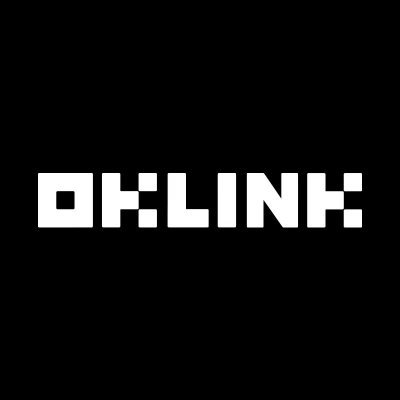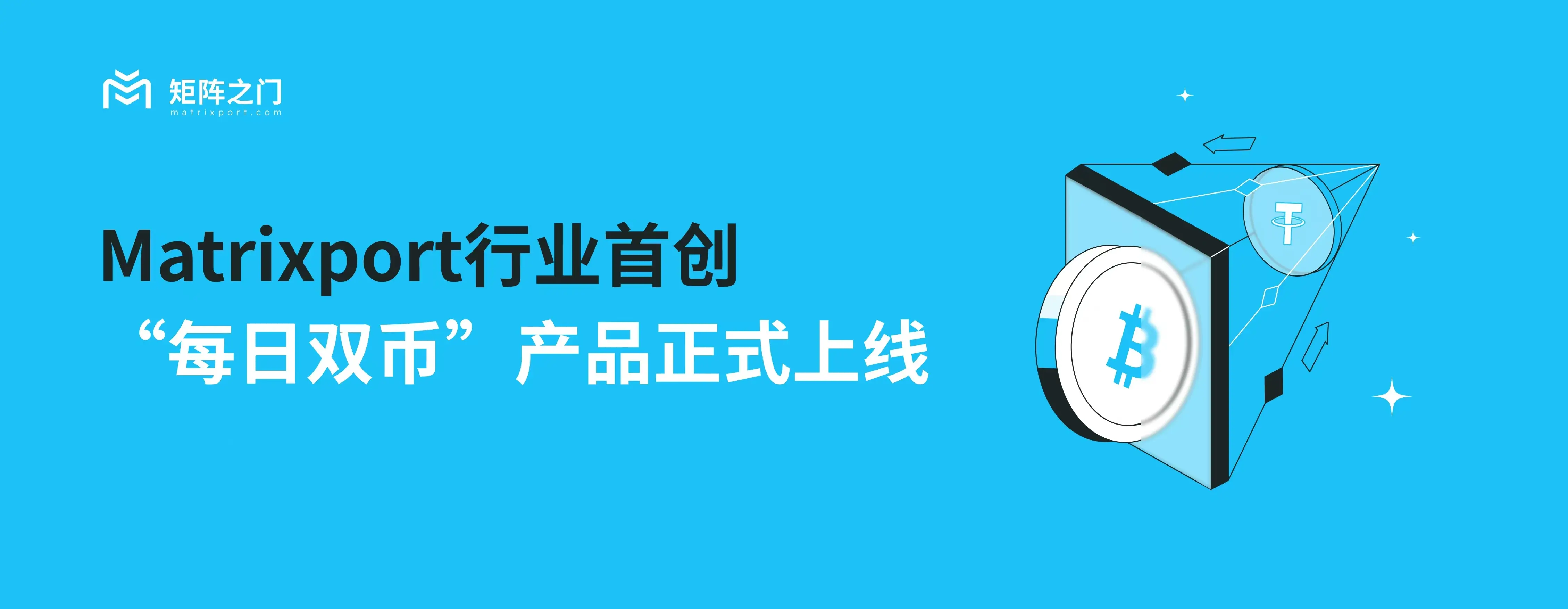ChainCatcher Space Review: OKLink, Matrixport, BounceBit, and CKB Focus on the Future Outlook of the BTC Ecosystem
As Bitcoin recently returned to $71,000, the Bitcoin ecosystem has once again attracted widespread attention in the crypto market. Last night, ChainCatcher, together with several guests, held a Space roundtable event on "Outlook for the Bitcoin Ecosystem." We were fortunate to invite OKLink Market Director Charlie, Matrixport Product Director Lockie, BounceBit COO YC, and Dr. Chen, Head of Research at the CKB Ecosystem Fund, to share their insights on the future of the Bitcoin ecosystem and discuss market trends and potential development opportunities. Below are the core viewpoints summarized:
How to enter the Bitcoin ecosystem, and what core businesses have been built so far?
Charlie (OKLink Market Director): OKLink, as a multi-chain aggregation browser, currently supports 44 mainstream blockchain networks, such as Bitcoin, EVM, Polygon, Solana, etc. OKLink provides a one-stop blockchain data service, including transaction queries, token authorization management, exchange reserve queries, address monitoring, and balance inquiries. Additionally, OKLink has a dedicated data section to help users quickly access summaries of hot topics in the blockchain industry. It also offers comprehensive API services for developers. Through OKLink, users and developers can efficiently and conveniently access and utilize blockchain data.
As early as ten years ago, when OKLink began building on-chain data infrastructure, there was a strong demand from users to support the BTC ecosystem. Therefore, over time, OKLink's BTC browser can be said to be the most comprehensive across the entire chain. In addition to basic transaction and wallet data, users can also discover more key data about inscriptions through the dropdown menu on the right side of the OKLink BTC browser at www.oklink.com/zh-hans/btc. Currently, it supports Runes, BRC-20, ARC-20, SRC-20, BRC20-S, and Ordinals NFT.
In April, we presented a detailed BTC halving special. Furthermore, if you want to understand large on-chain data, you can select Bitcoin on the data reporting page.
In the data dashboard, there are also various statistical charts waiting for you to explore, such as BTC mining difficulty, full node data, etc. These charts provide a one-click generation button, helping you easily share them on other social platforms or save them as CSV.
In the dropdown list of the Bitcoin browser, users can also view information about wealthy addresses, Lightning Network nodes, and more.
Lockie (Matrixport Product Director): Matrixport is currently the largest one-stop crypto financial service platform in Asia, meeting users' needs for digital asset management, wealth appreciation, lending, trading, and institutional custody, with asset management exceeding $6 billion.
As a one-stop financial service platform, Matrixport finds it challenging to directly participate in the construction of BTC chain ecosystem projects. However, as a "matrix port" between on-chain and off-chain ecosystems, we focus more on providing different products and financial application scenarios around BTC itself and its related assets, meeting the asset management and appreciation needs of different types of users within the ecosystem.
If you are a firm BTC holder and optimistic about its future in the long term, Matrixport provides you with a safe and professional platform. Our Cactus licensed custody service offers top-notch security guarantees, having already custodied a large amount of assets and served numerous institutional clients. In addition to storage, we also provide an OTC Desk for professional over-the-counter trading, allowing you to easily deposit fiat currency to increase your BTC holdings.
For clients seeking coin-based appreciation, we offer various financial products, such as fixed income, demand deposits, and arbitrage strategies, to help you achieve stable appreciation. If you are looking for higher returns and are willing to take on certain risks, you can also try diverse investment tools such as BTC dual currency, snowball, strategic investment, and dollar-cost averaging.
Matrixport not only provides products but also emphasizes risk control and strategy matching. We integrate different trading tools and risk control strategies to provide clients with one-stop services. Users only need to operate with one click on the app, and the rest is up to us. We fulfill our obligations according to product rules, helping users avoid irrational operations and liquidation risks caused by market fluctuations.
It is particularly worth mentioning that our "strategic investment" product is very popular and has grown rapidly. As everyone knows, whether on-chain or off-chain, stable income assets based on BTC have always been scarce. Holding coins and waiting for price increases during a bull market is both the main theme and the strategy with the highest recognized win rate among ordinary users. Currently, the platform has 12 BTC investment strategies, with the best-performing market-neutral strategy running for 272 days with a return of over 15%, and an annualized return of 20%. If you had bought this strategy with 10 BTC when it was launched last August, your asset net value would have grown to 11.5 BTC, with the coin price rising from $25,000 to $71,000, a total increase of 2.8 times, while your strategy holding total valuation increased by 3.22 times. This also highlights the attractiveness of coin-based financial management during a bull market.
We look forward to collaborating with more partners who have trading talent or excellent strategy teams to contribute to the BTC ecosystem and provide more choices and wealth appreciation opportunities for coin holders.
YC (Bouncebit COO): Bouncebit is a re-staking infrastructure platform built on BTC (Bitcoin), combining features of CeFi (Centralized Finance) and DeFi (Decentralized Finance). We provide users with BTC-based coin-based yields, with annualized returns ranging from 5% to 15%, depending on market funding rates.
In addition to basic yields, Bouncebit also offers staking services. Users can stake Bitcoin on our Layer 1 blockchain to earn node rewards. At the same time, users can bridge staked assets (such as LSD) to other ecosystems (such as zk-link) to gain more DeFi yields, such as points, etc.
Although Bouncebit has no direct connection with inscriptions and Layer 2 technology, the prosperity of the Bitcoin ecosystem is indeed closely related to the approval of ETFs, the rise of inscriptions, and the explosive growth of Layer 2 technology.
In the past few months, Bouncebit has mainly focused on building its own Layer 1 blockchain. Unlike other public chains, Bouncebit's chain uses Bitcoin to maintain its security, thus providing a new way to empower Bitcoin. Users do not need to stake Bitcoin or Bouncebit's native tokens to earn node rewards and quantitative returns.
Since its operation began at the end of January this year, Bouncebit's highest TVL (Total Value Locked) has exceeded $1 billion. Among them, more than half (about $400-500 million) of the funds have been used for quantitative arbitrage, bringing users over $10 million in BTC-based yields. This demonstrates Bouncebit's ability to provide users with stable and high-return investment opportunities.
Dr. Chen (Head of Research at CKB Ecosystem Fund): Currently, I mainly serve the CKB Eco Fund and its research team. The research team of the CKB Eco Fund focuses on strategic investments, grants, and providing technical support for hackathon developers within the CKB ecosystem. CKB, as a PoW public chain based on the UTXO model launched in 2019, transformed into a Layer 2 solution for BTC at the end of last year, with its core built on CKB. CKB, as a UTXO-based smart contract platform, has a high degree of structural isomorphism with Bitcoin.
Based on the UTXO characteristics of CKB, the research team proposed the concept of RGB++, aiming to bind UTXO-type assets on CKB or other UTXO public chains without the need for cross-chain bridges. This innovative technology promotes the development of the CKB ecosystem by defining the concept of isomorphic binding, providing new solutions for the secure and efficient circulation of assets.
Since its launch at the end of 2019, CKB has adhered to the POW and UTXO model, committed to building a privacy-focused, on-chain verification, and decentralized pan-Bitcoin ecosystem. The CKB team collaborates closely with Ethereum but adheres to the core principles of POW and UTXO, believing that they provide an unbreakable foundation for the crypto economy. The CKB Cell model is an extension of UTXO, achieving smart contract functionality while retaining the advantages of UTXO.
At the beginning of this year, CKB entered the BTC ecosystem through the RGB++ protocol, which allows for the synchronization of BTC assets and CKB assets without cross-chain bridges, with POW ensuring security while supporting client verification. RGB++ also plans to build a Lightning Network on CKB to enhance transaction speed and security.
CKB has built infrastructure based on RGB++, including wallets, NFT protocols, etc., aiming to explore more ecological possibilities based on Bitcoin and UTXO, including UTXO swaps, Nostr binding protocols, etc., to promote the development of decentralized applications.
Bitcoin halving leads to market fluctuations; how is it different from the past? What research observations do OKLink and Matrixport have?
Charlie (OKLink Market Director): According to the analysis from OKG Research, with the continuous growth of the Bitcoin ecosystem since 2023, the activity level of the Bitcoin network is significantly different from the last halving. The block reward has decreased to 3.125 BTC. Based on OKLink miner income data, miner total income typically declines after halving but then continues to rise, as miner income includes transaction fees in addition to block rewards.
Due to the significant increase in trading volume before and after the halving, miners receive more transaction fees. Generally, block rewards are far higher than transaction fees. However, during this halving, the fees miners received surpassed block rewards for the first time, reaching 70% of total income, reflecting the market's high attention and interest in the emerging BTC inscription protocol.
Although this is a temporary phenomenon, it at least proves that, without considering block rewards, the increase in transaction fees generated by on-chain activities is theoretically sufficient to provide continuous positive incentives for the miner community. To sustain this phenomenon, it is necessary for on-chain activities to remain sufficiently active, thus requiring more on-chain applications like Bitcoin runes that can attract market attention and create incremental value.
From this perspective, we believe that the Bitcoin halving will, to some extent, promote the development of the Bitcoin on-chain ecosystem and may become a "catalyst" for accelerating ecological innovation. However, as the Bitcoin ecosystem continues to prosper, the future impact of Bitcoin halving on the market will diminish. Although we will still pay attention to halving, it may only become a symbolic event indicating the transition of cycles rather than a key factor influencing price trends.
According to OKLink BTC data dashboard, the market situation for the fourth halving (April 20, 2024) is more interesting and complex. In the month leading up to the halving, the coin price reached a recent high of $71,000. This may increase the pressure for price increases after the halving. However, it is worth noting that the daily trading volume significantly increased earlier than in previous halvings, maintaining an average daily trading volume of over 400,000 starting from one month before the halving, peaking at 580,000 on the day of the halving. This may indicate the market's high expectations for this halving.
Lockie (Matrixport Product Director): The BTC market share remains around 54%, and its price fluctuations indeed affect the hearts of many coin holders, as our analysts say - "Bitcoin is never boring." Especially this time, the BTC halving did not bring about a rapid price surge like previous halving cycles; instead, it entered a correction and consolidation period. Before the BTC halving, it first reached a historical high of $69,000 on March 5, then surged to $73,000 on March 14, but failed to break through after three attempts, followed by a correction that saw it drop below $57,000. Our analysis suggests that the underlying reasons may be related to an unfavorable macro environment and declining expectations for interest rate cuts. However, after favorable macro data was released this week, it quickly returned to $70,000.
In addition to the increase in BTC halving transaction fees that Charlie just mentioned, we believe another significant external change factor this time is the backdrop of BTC ETF approvals and continuous net inflows of funds. As of now, BTC ETF has seen a daily net inflow of $307 million, with total assets of $58.7 billion, experiencing net inflows for seven consecutive days, totaling $12.867 billion. Subsequently, with the halving of BTC production supply, continuous net inflows into ETFs, and favorable trends in macro data, these will all be key variables affecting the supply and demand relationship of Bitcoin. Each halving cycle essentially represents a process of breaking the old balance and seeking a new balance upwards.
We in the industry often pay close attention to specific crypto events such as halving and upgrades. The BTC halving indeed attracts considerable attention, discussion, and external traffic like an industry festival, and the number of Bitcoin holding addresses increases accordingly. In the 150 days following the halving, the number of newly created Bitcoin addresses increased by 83%, 101%, and 11%, respectively. From this perspective, halving does have a positive impact on BTC prices, although the impact gradually weakens, as the proportion of unmined Bitcoin becomes smaller and smaller.
Therefore, we want to emphasize that we should pay more attention to several key factors affecting traditional financial assets—such as economic growth, dollar liquidity, and inflation. These have become key drivers of BTC prices and have been repeatedly confirmed. Especially since the last bull market, when traditional financial institutions rushed to enter the market, and with the approval of spot ETFs at the beginning of this year, more and more traditional financial players are entering the market with larger amounts of capital. Thus, we believe that these macroeconomic data will increasingly and significantly impact BTC asset prices.
Additionally, we have made some observations from the perspective of BTC returns after halving. From the maximum increase after halving: the first halving in 2012 saw BTC increase by over 100 times; the second halving saw a 41-fold increase, and the third halving saw less than a 7-fold increase. If the fourth halving sees a 3-fold increase, the corresponding highest price would be $190,000, referencing the price at the time of halving at $63,490.
The average return rate of BTC 30 days after halving is 15%, while this time the increase over 30 days was 12.56%; the average return rate 60 days after halving is 16%. If we were to rigidly apply historical data, we could expect to see BTC reach $73,000 again.
Of course, this is just one perspective of observation. Personally, I am more inclined to believe in historical experience this time and believe that BTC will break its previous high again in the next 30 days, opening a new chapter in the bull market. I remember there were also many doubts before and after the last halving, with significant market divergence. However, since we are in this industry, we must believe in something and stick to our views.
Once the coin price reaches a certain high point and achieves a new supply-demand dynamic balance, the volatility of Bitcoin will gradually decrease as the ETF holding ratio increases.
Matrixport offers many interesting products for everyone to choose from, such as short-term U-dual currency, bullish snowball, BTC passive enhancement strategies, etc. We will also gradually launch some innovative products aimed at reducing volatility, so stay tuned.
The market has varying views on BTC and the crypto market trends. Can you share your judgment on the future of BTC and mention key data indicators or major events to watch?
Charlie (OKLink Market Director): In the long run, I am optimistic about the future of BTC and the cryptocurrency market. The Bitcoin ecosystem has shown significant development and innovation over the past two years, with the increase in applications such as inscriptions, runes, Layer 2 technology, Lightning Network, and restaking, all bringing new vitality and possibilities to the cryptocurrency field, further broadening its application scenarios and market potential.
At the same time, continuous technological advancements are also a crucial factor driving market growth. The emergence of solutions like Layer 2 and the Lightning Network effectively addresses Bitcoin's scalability issues, improving its transaction speed and capacity, making it more suitable for large-scale applications. In the future, with further technological development, Bitcoin is expected to better integrate with traditional finance, attracting more retail and institutional investors into the market.
Bitcoin's limited supply and decentralized characteristics also make it an attractive store of value. In the context of global economic uncertainty, Bitcoin's value storage characteristics will become more pronounced, providing investors with a stable hedging tool.
However, we also need to be aware of some potential risks and challenges. Changes in regulatory policies may have a direct impact on the market, so we need to closely monitor the dynamics of relevant policies. Additionally, the cryptocurrency market is highly volatile, and investors need to have a certain level of risk tolerance and investment strategies.
To gain deeper insights into the potential direction of the market, we need to pay attention to some key data indicators. Trading volume is an important indicator reflecting market heat, providing us with intuitive information about market trends. Moreover, metrics such as the number of active addresses, trading volume, and the growth of decentralized applications (DApps) can also provide insights into the actual usage and adoption of cryptocurrencies.
From the perspective of OKLink's browser active address data, currently, the average active address for Bitcoin accounts for about 1.43% of the total address count, which is still higher than Ethereum, which is around 0.66%. Additionally, the daily number of new Bitcoin addresses has consistently maintained over 300,000 from 2016 to now. In contrast, Ethereum's new address count is currently only around 110,000. Therefore, I believe that in the long run, the Bitcoin ecosystem is still trustworthy.
Dr. Chen (Head of Research at CKB Ecosystem Fund): From a long-term perspective, cryptocurrencies (such as BTC and ETH) have the potential to become important carriers that transcend existing consensus mechanisms. The evolution of human social consensus has moved from kinship to geography and then to social consensus, while cryptocurrencies represent a new type of digital consensus mechanism. Although the market is currently highly volatile, the long-term development prospects of cryptocurrencies are optimistic.
In the medium term, the development of cryptocurrencies should focus on their technology and ecosystem. The number of active user addresses, the number of applications launched, and whether they can support actual user usage are key indicators for measuring whether the cryptocurrency ecosystem is developing healthily. Although BTC has a high market value, its actual use for payments and applications is still relatively rare, which is an area that needs improvement in the medium term.
In the short term, the cryptocurrency market is influenced by various factors, including ETF approvals, the U.S. elections, and other events. These events may have a direct impact on the market, and investors should pay attention to these short-term market dynamics and news.
In the long term, I am optimistic about the development prospects of cryptocurrencies; in the medium term, we need to focus on technological and ecological improvements; and in the short term, we should pay attention to market dynamics and news impacts.
YC (Bouncebit COO): The current cycle of the cryptocurrency market may be extended due to the U.S. elections and the delay in interest rate cut expectations. Currently, although Bitcoin has reached a new high, the market capitalization of stablecoins has not yet reached previous highs, and altcoins have not shown significant activity. This may indicate that the current market is still dominated by Bitcoin and Ethereum, and new funds may primarily enter the market through ETFs. The key to the future market lies in how much capital can flow into the altcoin market, which will affect the overall market performance.
Lockie (Matrixport Product Director): I think we should pay more attention to macroeconomic data and policy impacts, such as inflation, liquidity of funds, and whether the ETH ETF can pass smoothly this week. Indicators of liquidity include the net inflow of BTC ETFs, net inflow of stablecoins, and the leverage funding rates in the derivatives market.
Also, the U.S. elections have historically seen Bitcoin perform exceptionally well in election years, averaging a 192% increase. Coincidentally, the four-year halving aligns with the four-year U.S. election cycle, and the number of users and institutions holding and paying attention to cryptocurrencies is increasing, leading to greater political influence for crypto. Candidates will also more actively create relevant topics for debate, showcasing a crypto-friendly image. Both strong competitors in this election have demonstrated a positive attitude towards crypto assets, actively creating topics for debate. This will also foster more crypto-friendly policies, and regardless of the final outcome, the entire process will continue to enhance the market recognition of crypto assets.
What development directions should Bitcoin ecosystem products focus on in terms of product development?
Dr. Chen (Head of Research at CKB Ecosystem Fund): Although Bitcoin's development path faces many challenges, it also harbors tremendous opportunities. First, it must break free from the cognitive constraints imposed by existing models like Ethereum, especially in terms of smart contracts and account models, and seek its unique development path. Secondly, the technical limitations of Bitcoin, particularly the capabilities of its scripting language, the security challenges of decentralized bridge solutions, and the slow progress of the Lightning Network project, are all urgent issues that need to be addressed. Additionally, the lack of breakthrough applications in the Bitcoin ecosystem also limits its further development.
However, it is precisely these challenges that bring infinite opportunities to Bitcoin. Bitcoin can fully leverage the advantages of its UTXO model to explore innovative business models for on-chain games and assets, as well as on-chain verification of off-chain computations. Through on-chain games, unique gaming experiences can be created, attracting more users to participate. The circulation and application of on-chain assets will further promote the prosperity of the Bitcoin ecosystem. Meanwhile, the business model of on-chain verification of off-chain computations will meet user and market demands, injecting new vitality into the development of the Bitcoin ecosystem.
Furthermore, promoting the development of the Lightning Network with a more open mindset is also an important direction for the development of the Bitcoin ecosystem. As a high-speed highway for Bitcoin's Layer 2 assets, the Lightning Network will support more assets based on the UTXO model to circulate on it. This will bring more liquidity and application scenarios to the Bitcoin ecosystem. Encouraging more teams to participate in the construction and acceleration of the Lightning Network will also promote its faster and better development.
Finally, exploring more new architectural approaches based on the P2P spirit and client verification ideas is also an important direction for the development of the Bitcoin ecosystem. This will bring more innovation and development opportunities to Bitcoin, driving its continuous progress.
YC (Bouncebit COO): The development direction of the Bitcoin ecosystem mainly focuses on several key areas. First, it is to enhance its scalability, which can be achieved through technologies like the Lightning Network to improve Bitcoin's transaction speed and capacity. Secondly, it is to enhance Bitcoin's programmability, such as through inscriptions, to bring more flexibility and application scenarios to Bitcoin assets. However, our team has chosen a unique direction, focusing on the revolution of asset efficiency.
We firmly believe that Bitcoin is an asset story, not just a technological innovation. Therefore, our goal is to bring more flexibility and compounded yields to Bitcoin assets, rather than merely developing new applications on the Bitcoin chain. This positioning differentiates us from other projects.
A significant difference between the Bitcoin ecosystem and the Ethereum ecosystem is that the Bitcoin ecosystem is more built on centralized finance (CeFi). Lending, yield farming, and mining machine loans are often completed through offline and internal exchange methods in the Bitcoin ecosystem. This situation is unlikely to be completely replaced by technology in the short term, as projects like WBTC (Wrapped Bitcoin), despite being around for a long time, still have a market value far smaller than Bitcoin itself.
From the perspective of staking, Ethereum has a native proof-of-stake (PoS) mechanism that allows users to earn yields by staking Ethereum. In contrast, Bitcoin, as a proof-of-work (PoW) token, has a different staking method. Currently, aside from a few projects like Bouncebit that can provide yields for BTC through a CeDeFi approach, other BTC staking projects often rely on token inflation or other means. This has led to a situation where supply exceeds demand in the staking market, posing challenges for re-staking Bitcoin and Ethereum.
In the Bitcoin ecosystem track, projects often encounter market pain points. Please share solutions to these pain points and briefly describe the main directions and layouts of the Bitcoin ecosystem track moving forward.
Charlie (OKLink Market Director): The market faces three major pain points when dealing with the Bitcoin ecosystem: high entry barriers, frequent on-chain scams, and the opacity of investment logic. To address these issues, we provide the OKLink solution.
OKLink aggregates data from across the network, supporting 44 public chains and covering a wide range of data dimensions, including NFTs, tokens, and various protocols. We encourage users to not only pay attention to the arrival of funds but also to deeply understand the logic behind transactions. By viewing large transactions, analyzing trader behavior, and tracking historical transactions, users can gain insights into investment opportunities and refer to the investment strategies of whale accounts.
To enhance user experience and acquisition efficiency, we provide various integrated data analysis tools, such as large transaction reporting, real-time gas fee statistics, and on-chain metric statistics. These tools visually present data in chart form, allowing users to easily pull timelines and apply different filters to quickly capture key information.
In terms of security, we remind users to stay rational and not be overly greedy. At the same time, we provide tools to help users check the authorization status of apps or tokens and allow users to revoke risky authorizations. Additionally, we also monitor and mark addresses that may be related to hacking incidents or theft events, helping users stay vigilant and reduce the risk of being scammed.
OKLink is committed to providing users with comprehensive, accurate, and timely Bitcoin ecosystem data and analysis tools, helping users better understand and seize investment opportunities while focusing on user safety and experience.
Dr. Chen (Head of Research at CKB Ecosystem Fund): Regarding the development of BTC L2 ecosystem projects we focus on, we indeed face multiple challenges. Firstly, in addition to the four main challenges mentioned earlier, as an Eastern team, we also need to address market skepticism and stereotypes regarding Eastern teams. This skepticism and stereotype affect our acceptance in the global market, making it more difficult for us to translate excellent technical ideas into actual products.
As the CKB ECO FUND, we have developed a detailed action plan. In terms of technology, we will continue to advance the improvement of RGB++, especially the completion of the second +, as well as the development of the Lightning Network. At the same time, we plan to complete the testing and launch of the UTXO Stack in Q3 and Q4, as well as the testing and deployment of the CKB Lightning Network. Additionally, we will work on the isomorphic binding of Nostr to achieve social payments and further expand the ecosystem.
In terms of the Eco Fund, we successfully introduced high-quality projects like Matrix Lab's World3 in Q2. Next, in Q3, we will open grants for the ecosystem fund, encouraging more developers and projects to deploy on CKB, especially in the UTXO-based BTC L2 ecosystem.
In terms of marketing, we will also take proactive actions. Starting at the end of this month, we will arrange a series of schedules to attend various academic and industry conferences and visit developer communities and investors. We hope to establish closer connections and collaborations with more users, developers, project parties, and VCs to jointly promote the prosperous development of the BTC L2 ecosystem.
Lockie (Matrixport Product Director): Our next direction may not involve much action in BTC technological innovation but will focus more on identifying any emerging phenomenal innovations and collaboration opportunities to bring different yields to our users. We are more positioned as an ecosystem service provider, starting from customer needs. Our layout is mainly divided into two parts:
We realize that as the popularity of crypto assets increases, BTC halving, ETFs, and NFTs in the BTC ecosystem will all make BTC more prominent, and the industry will welcome more new customers entering this space. We have recently received feedback from some new users who, after registering, are unsure about which products, strategies, or what types of products best suit their investment needs. Therefore, serving new users well, helping them enter the ecosystem, providing user education, and balancing the differentiated needs of new and old users is an important responsibility and obligation for us as a crypto "matrix port."
We have launched a "newbie package," covering red envelopes, interest coupons, and experience funds, guiding users to start with low-risk, easy-to-operate, and stable-yield products, followed by structured products.
After all, trading is the most fundamental need of users. However, newcomers often lack theoretical and practical foundations and have not yet formed their investment logic, making them susceptible to FOMO emotions, chasing highs and selling lows. We hope that Matrixport's strategic investment products can help users better achieve asset appreciation. Public strategies can help users select and discover excellent strategies and teams for entrusted investments, allowing funds to be managed by professionals. Private domain strategies can also enable relatively experienced users to bring their newly entered friends into a small circle to trade and earn money together based on trust. From recent product data and performance, it is evident that it has indeed addressed users' pain points in this regard, with the market helping strategy teams, clients, and the platform all earn money, achieving a win-win situation. Moving forward, we will continue to invest in optimizing user experience and enriching product features.
If anyone is interested in the products just mentioned, please fill out our questionnaire, and we have a very sincere gift to offer everyone. Click here for the questionnaire.
ChainCatcher: Thank you to all the guests for their wonderful sharing and in-depth insights last night, which have given us a deeper understanding of Bitcoin and its ecosystem. Also, thanks to all the listeners for their active participation, and we hope you found your direction in last night's discussion.















